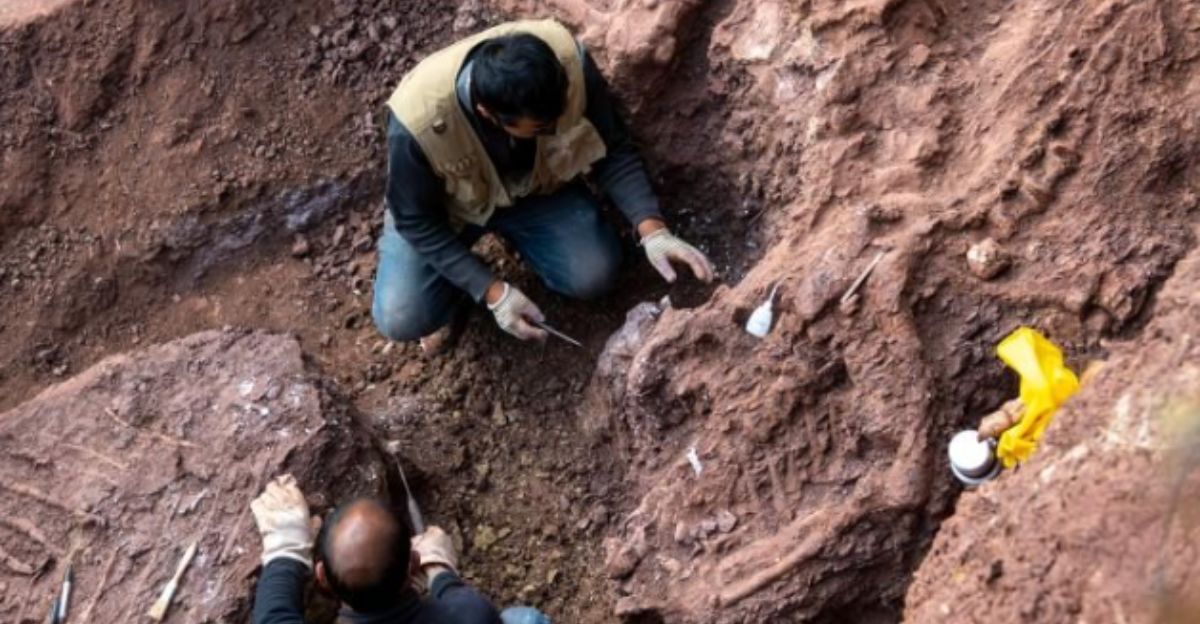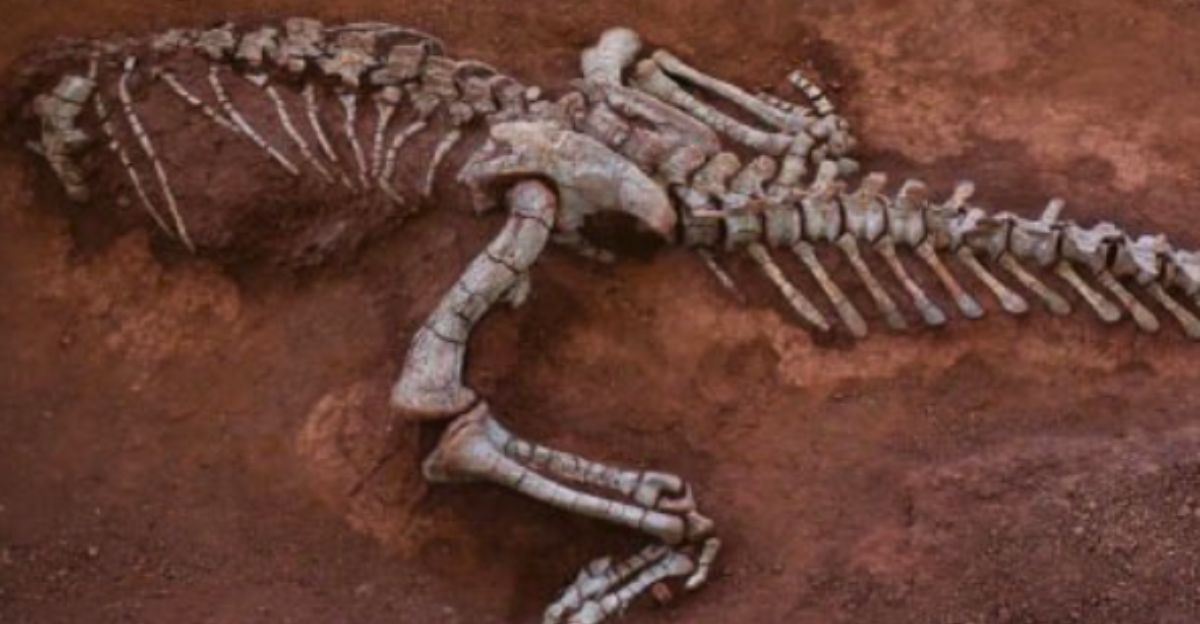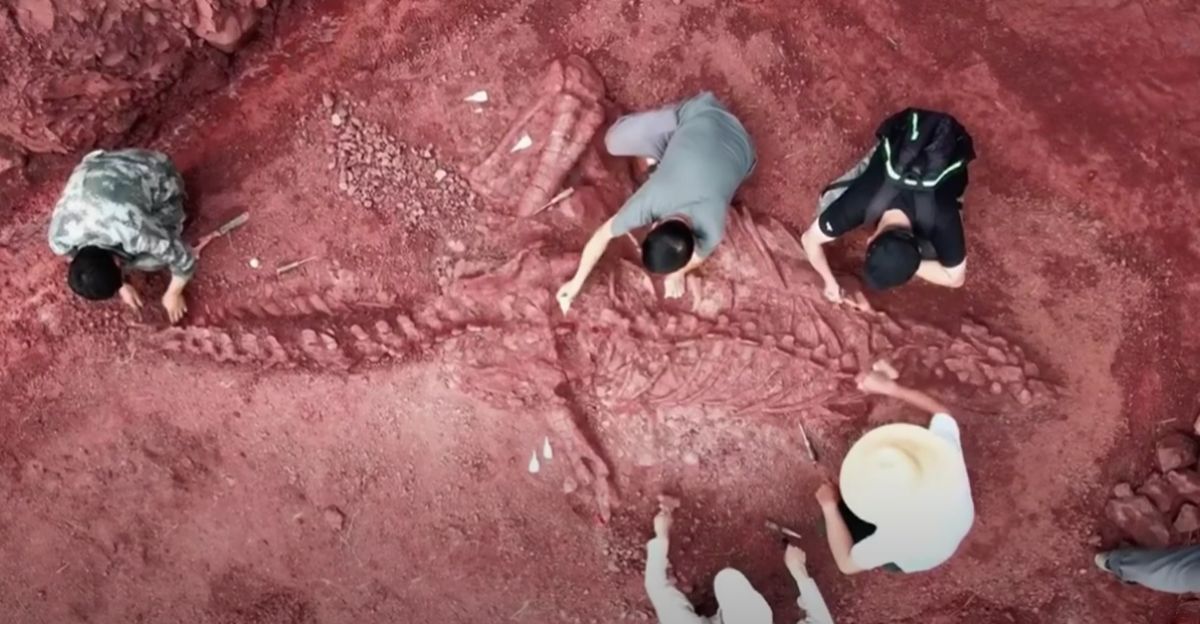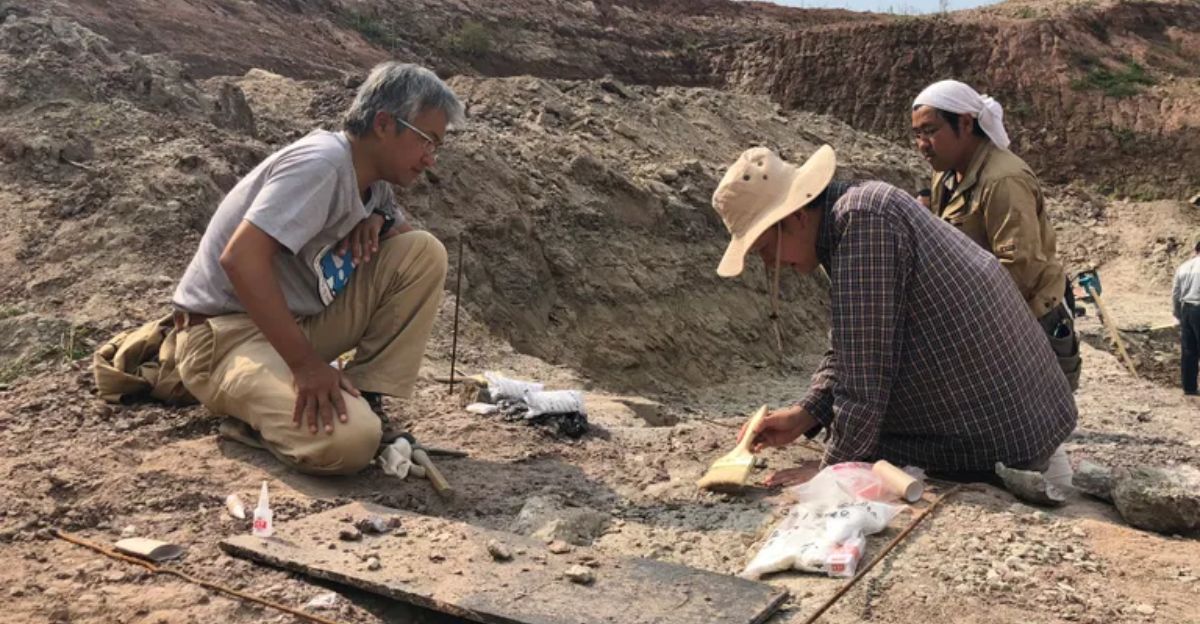
Hidden under the rolling hills of China’s Yunnan Province, something old and surprising has turned the world of paleontology upside down.
Fossil hunters have poked through the lush red beds here for decades, but in recent months, the Earth has slowly revealed something so massive and anomalous that it’s making scientists reconsider what they thought they understood about the Jurassic period.
Is it a new top predator, a friendly giant, or something more bizarre? The truth is currently buried, but the consequences are likely to shake the very foundation of our understanding of dinosaur evolution. What was it that they discovered—and why is it so significant?
Jurassic Giants: Why This Discovery Upends Our Evolutionary Map

The Jurassic world has long been portrayed as a kingdom of giants, yet the latest finds consistently rewrite that narrative. Until recently, scientists thought that the emergence of the biggest dinosaurs occurred later, in the Cretaceous period.
This new discovery, however, shakes up this timeline, proposing that giant plant-eaters could have existed much earlier than previously believed. If so, it could prompt a universal reassessment of how—and when—dinosaurs evolved into the titans we picture today.
For paleontologists, it’s not just about size; it’s about tracing the roots of adaptation, survival, and the unexpected twists in life’s ancient story.
The Dig: A Small Town, a Big Mystery, and the Team Who Wouldn’t Quit

The story begins in Lufeng, a city in Yunnan Province that’s become a legend among fossil hunters. In 2015, a local team led by Dr. Xiang-Yuan Chen stumbled upon something unusual: a partial skeleton, larger than anything they’d seen in the region before.
The dig was grueling: thick mud, fragile bones, and the ever-present risk of losing key evidence to the elements. Yet, the excitement was palpable.
Social media began buzzing with rumors, and even local schoolchildren visited the site, hoping to catch a glimpse of history in the making. As the team persevered, they slowly unveiled a discovery that would capture everyone’s attention.
Putting the Giant Together: How Science Reconstructs Bones to Breakthroughs

Uncovering dinosaur bones is only the beginning; the real challenge is making sense of what’s found. In this case, the skeleton was surprisingly well preserved, spanning from the second dorsal vertebra to the twentieth caudal vertebra, with nearly complete limbs and girdles.
Scientists sifted through every bone fragment, comparing features like vertebrae and limb bones to known species. Each finding added to the mounting tension: Was it a new species, or a giant example of something we’ve already discovered?
The latest advanced imaging, meticulous measurement, and months of discussion ensued, more and more evidence accumulated, and only one thing was clear: this was no run-of-the-mill dinosaur.
Xingxiulong yueorum, the Colossal Sauropodomorph

Finally, the team revealed the bones of Xingxiulong yueorum, a new addition to the sauropodomorph family. Estimated at 26–33 feet long, it surpasses its closest relative, Xingxiulong chengi, and ranks as one of the largest Jurassic dinosaurs discovered in Asia.
What makes this so amazing isn’t merely its size, but the timing of this discovery—this colossal creature existed some 190 million years ago, more than 100 million years before the most famed sauropod giants.
Its distinctive skeletal characteristics, such as a pendant-shaped fourth trochanter and sturdy limbs, suggest a rich evolutionary history yet to be uncovered.
How Does Xingxiulong Compare to a T. Rex? A Tale of Two Titans

So, how does Xingxiulong yueorum compare to the iconic Tyrannosaurus rex, or T. Rex? While the T. Rex is often seen as the king of dinosaurs, it lived much later, during the Cretaceous period, which directly followed the Jurassic period.
Xingxiulong, up to 33 feet, rivals or even exceeds the T. Rex in length, which was about 40 feet, but it’s a different kind of giant. It was herbivorous, long-necked, and potentially bipedal, representing a crucial evolutionary step toward the later, even larger sauropods.
The T. Rex was carnivorous, with a relatively short, muscular neck, gigantic head, and serrated teeth. This comparison fuels the debate about what “giant” really means in dinosaur terms.
What Xingxiulong Tells Us About Jurassic Life: More Than Just Size

Finding Xingxiulong yueorum doesn’t just break records, it adds to our knowledge of Jurassic ecosystems. Its skeleton shows features of weight-bearing and high-volume plant processing, indicative of lush, resource-rich habitats.
The fact that it had four sacral vertebrae, a characteristic common in subsequent, more evolved sauropods, gives us a unique glimpse into how these titans developed.
For paleontologists, each new trait is a clue to how dinosaurs diversified and thrived, even as climates and the continents shifted around them.
China’s Dinosaur Gold Rush: How One Region Redefines Prehistoric History

Yunnan’s Lufeng Formation has become a hotspot for dinosaur discoveries, with finds like Xingxiulong yueorum highlighting China’s pivotal role in rewriting the prehistoric narrative.
Over the past decade, a surge of new species has emerged from these rocks, each one challenging our old assumptions about where and how dinosaurs evolved. This fossil boom has turned China into a global leader in paleontology.
The result is viral social media posts on platforms like TikTok and Instagram, where young scientists showcase their finds and spark curiosity worldwide. Xingxiulong’s discovery is just one chapter in a much larger, ongoing saga.
What’s Next? The Unwritten Chapters of Dinosaur Evolution

However, the Xingxiulong yueorum discovery leaves us with as many questions as it answers. Might even larger or more bizarre species remain hidden in Yunnan’s hills?
How did these ancient giants co-evolve so rapidly, and what does that reveal about species adaptability? As new technologies and international collaborations emerge, the next breakthrough could already be buried in the ground.
For now, at least, Xingxiulong yueorum serves as a reminder that the tale of the dinosaurs—and the deep history of our planet—is only just beginning. What might the next excavation yield?
The True Legacy: Wonder, Curiosity, and the Human Impulse to Comprehend

Ultimately, the Xingxiulong yueorum discovery is about more than extraordinary measurements or bones. It’s a testament to human curiosity—the relentless drive to piece together our planet’s lost worlds, to challenge what we think we know, and to find wonder about both the unexpected and unknown.
Whether you’re a scientist in the field, a student scrolling through Instagram, or a dreamer imagining giants beneath your feet, discoveries like this remind us that the past is always present, waiting to surprise us time and time again. The adventure continues, one fossil at a time.
Explore more of our trending stories and hit Follow to keep them coming to your feed!

Don’t miss out on more stories like this! Hit the Follow button at the top of this article to stay updated with the latest news. Share your thoughts in the comments—we’d love to hear from you!







